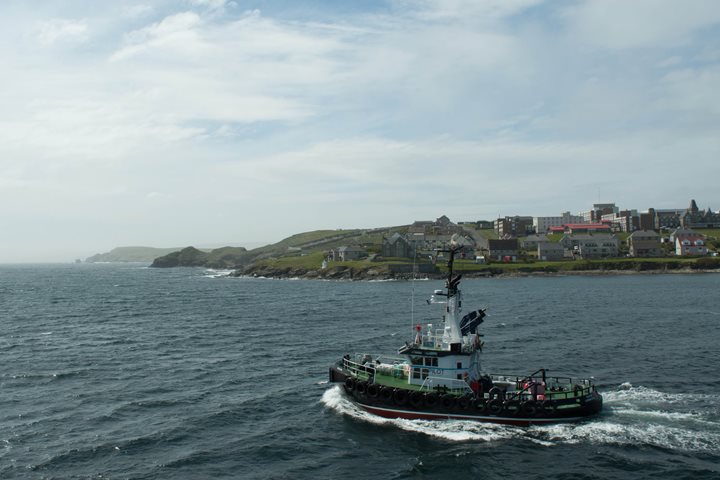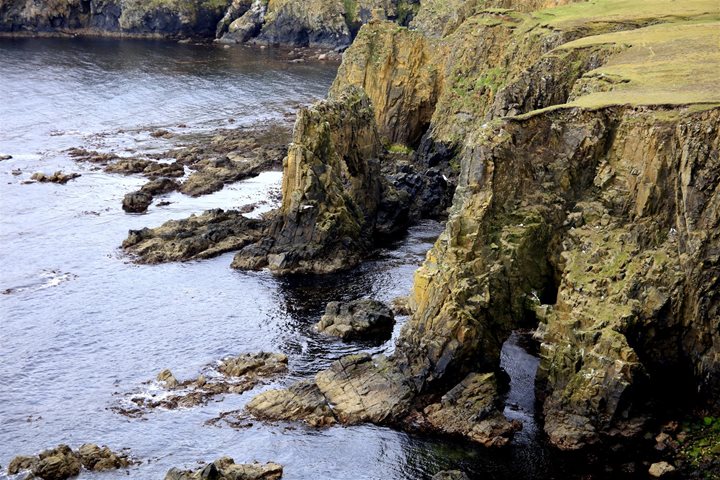The last full day of this expedition found National Geographic Explorer lying quietly along the dock in Lerwick, Shetland. This morning we would drive to the very southern end of Mainland Island to visit one of the best known prehistoric archeological sites in all of Scotland. This site has it all, as remains have been dated from 2500 BC up to the 17th century AD, covering the Bronze age, the Iron age, the Pictish period, the Viking age and even through Medieval times. None of the previous inhabitants of this site would have known it as Jarlshof, which was the named coined by Walter Scott in his writings in 1821.
The Sumburgh Lighthouse was built in 1821, and was designed by Scottish civil engineer Robert Stevenson, who gained fame as the designer and builder of the Bell Rock Lighthouse. Stevenson brought many innovations to his lighthouse designs, including the use of Fresnel lenses and improved reflectors. Perhaps his most ingenious improvement was a system that provided individual lighthouses with their own unique pattern, allowing seafarers the ability to identify individual lighthouses based on the blinking light pattern. Author Robert Louis Stevenson, who brought us Treasure Island and Strange Case of Dr. Jekyll and Mr. Hyde was his grandson.
Less, dear reader, you think the day was only about manmade edifices, wildlife was out in full display along the sheer grassy cliffs. Northern fulmars were paired at their nesting sites on the tiniest ledges of the cliff face. While further up the darling of everyone’s heart, the Atlantic puffin, was busily coming and going from their burrows. These unlikely fliers are superb divers, using their short wings to propel themselves both in the air and below the sea surface. The drawback to their design becomes apparent when these pudgy puffins try to land with grace, instead falling out of the misty sky.
And how could we possibly travel to Shetland, without mentioning the world famous pony that bears the name of these islands. These small (11 hands at the withers), hearty and very intelligent ponies, come in many patterns and shades of color and are all owned and cared for by local people who live in the islands. Shetland ponies make good training ponies for young riders as they are generally considered to be good tempered, very gentle, and headstrong by nature. We concluded our exploration of Lerwick with tea and home-baked shortbread cakes along with a local spinner and weaver sharing her wares.
Upon our return to the ship, we sailed out of the harbor and set a course across the North Sea toward Norway.









